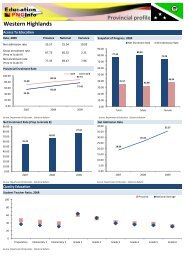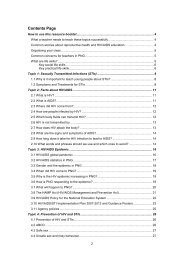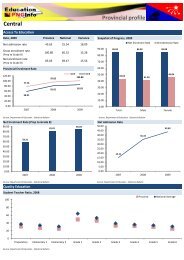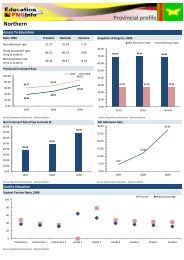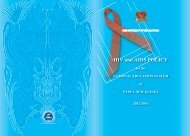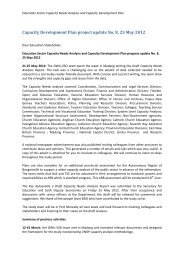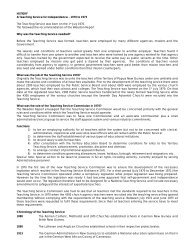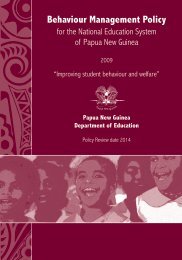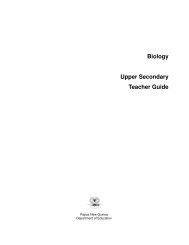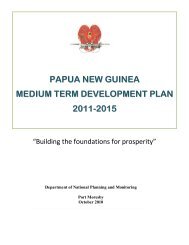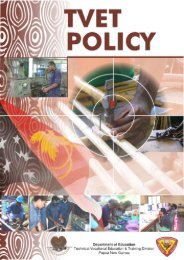Health Education to Prevent HIV/AIDS & STIs - Department of ...
Health Education to Prevent HIV/AIDS & STIs - Department of ...
Health Education to Prevent HIV/AIDS & STIs - Department of ...
Create successful ePaper yourself
Turn your PDF publications into a flip-book with our unique Google optimized e-Paper software.
<strong>Department</strong> <strong>of</strong> <strong>Education</strong> TVET Division<br />
<strong>HIV</strong>/<strong>AIDS</strong> & STI Teacher Guide<br />
Lesson 12<br />
By the end <strong>of</strong> this lesson students can…<br />
1.3 Explain why these behaviours are classified high, low and no risk.<br />
1.4 Explain how practicing safe sex leads <strong>to</strong> a healthier relationship<br />
Resources: Conclusion questions on the board or butcher paper<br />
a. Introduction: (15 mins) Quick quiz<br />
Ask the students <strong>to</strong> answer these questions in pairs.<br />
Q: Why are some behaviours described as low risk<br />
Q: Why are some behaviours described as high risk<br />
Q: Why are some behaviours described as no risk<br />
Ask them <strong>to</strong> check their Resource Book if needed.<br />
Say, “No risk behaviour means there is no contact between your penis, anus or<br />
vagina and the four body fluids that transmit <strong>HIV</strong> (blood, semen, vaginal fluid, breast<br />
milk).”<br />
“Low risk behaviour means that there is only a small chance <strong>of</strong> <strong>HIV</strong> transmission.<br />
There might be contact between body fluids but there will be a barrier or other reason<br />
why this is not likely <strong>to</strong> lead <strong>to</strong> <strong>HIV</strong> transmission.”<br />
“High risk behaviour is when the four body fluids that can carry <strong>HIV</strong> enter the body<br />
<strong>of</strong> the uninfected person through a cut or sore or s<strong>of</strong>t tissues.”<br />
Ask them <strong>to</strong> tell their peer 3 behaviours that are low risk, 3 which are high risk and 3<br />
which are no risk.<br />
b. Main Activity: (20 mins) Group discussion<br />
In groups <strong>of</strong> 4 ask students <strong>to</strong> discuss why practicing safe sex leads <strong>to</strong> a healthier<br />
relationship<br />
E.g. Safe sex is a way <strong>of</strong> showing that you love your partner. Safe sex reduces the<br />
risk <strong>of</strong> <strong>HIV</strong> or STI transmission, reduces the risk <strong>of</strong> unplanned pregnancy, reduces<br />
the risk <strong>of</strong> worry or fear and reinforces the importance and value <strong>of</strong> sex.<br />
Collect feedback from the group and summarise on the board.<br />
c. Conclusion: (15 mins) Paired questions<br />
With a partner students should answer one <strong>of</strong> these questions.<br />
Why is vaginal sex with a condom safe<br />
Why is anal sex without a condom not safe<br />
Why is sex when drunk <strong>of</strong> on drugs not safe<br />
Why is sex when one partner has an STI not safe<br />
53





